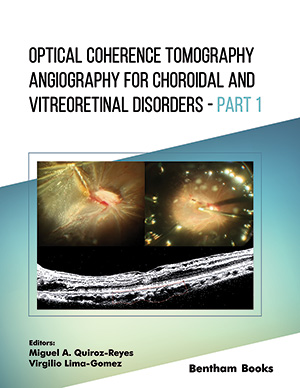Abstract
One of the most significant developments in ocular imaging in the last
century was optical coherence tomography (OCT). OCT angiography (OCT-A), an
extension of OCT technology, offers depth-resolved images of the blood flow in the
choroid-retina that are much more detailed than those produced by earlier imaging
techniques such as fluorescein angiography (FA). Due to its requirements of novel
tools and processing methods, the prevailing imaging constraints, the rapid
improvements in imaging technology, and our knowledge of the imaging and relevant
pathology of the retina and choroid, this novel modality has been challenging to
implement in daily clinical practice. Even those familiar with dye-based ocular
angiography will find that mastering OCT-A technology requires a steep learning curve
due to these issues. Potential applications of OCT-A include almost all diseases of the
choroid and retina, as well as anterior segment diseases. Currently, the most common
indications are age-related macular degeneration and ischemic retinopathies, including
diabetic retinopathy and retinal occlusive vascular disorders. Incorporating OCT-A into
multimodal imaging for the comprehensive assessment of retinal pathology is a fast-growing area, and it has expanded our knowledge of these complex diseases in terms of
diagnosis and treatment. This review describes the current main indications of OCT-A
in retinal and choroidal diseases.
Keywords: OCT-angiography, OCT, Retinal diseases, Macular diseases, Choroidal diseases, Fluorescein angiography.






















